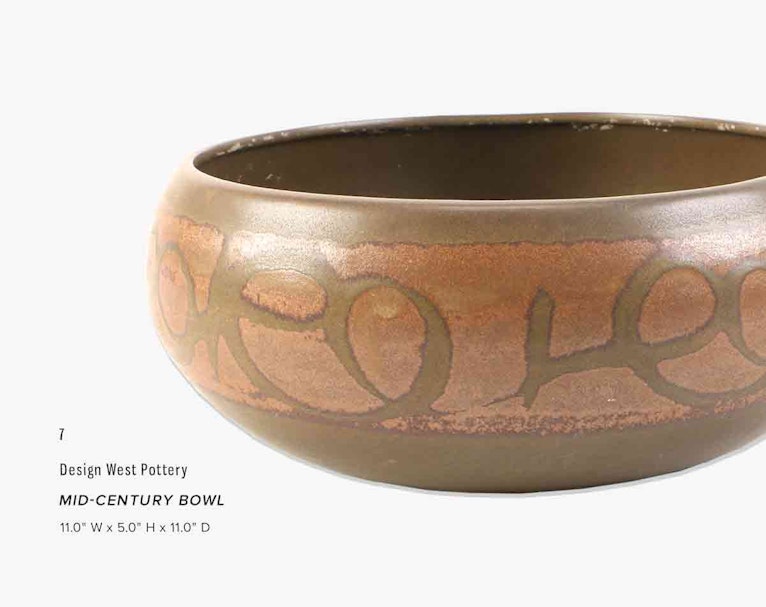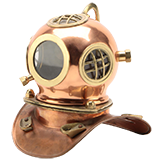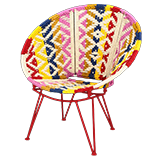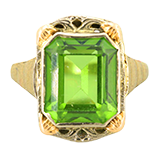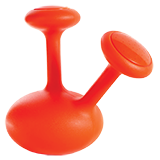A.C.E. Series: What to Look for in a Piece of Pottery

“Ceramics is a very technical art,” says Susannah Tisue, owner of SKT Ceramics, “You’re creating this object and putting it into a kiln, and you have a general idea of how all of the elements will work together based on the pieces that you’ve made in the past. A slight change in temperature or in (glaze) thickness, however, can change the entire look and finish of a piece.” At her Cincinnati studio, Tisue’s team creates functional porcelain tableware decorated with her original illustrations. The illustrations are screen printed with colored clay and hand painted with translucent glaze. The pieces are dipped into the background glaze and high fired in a gas kiln. We asked for her help to contextualize the pieces in this pottery sale and lend her expertise in identifying the technical aspects that bring a piece to life.
Form
Pottery can be made by hand-building, wheel throwing, and using molds. Hand-building means you use your hands and slabs, coils, or balls of clay to pinch, combine, and build different forms. Pottery thrown on the wheel, ideal for one of a kind circular and cylindrical vessels, requires years of practice learning to throw with speed, precision, and consistency. Mold-making involves the use of ceramic plaster molds that are filled with liquid clay and emptied once the clay has formed a solid enough skin on the interior of the mold. Pieces made by a mold are consistent because the walls are perfectly even. It is easier to find artisans who can produce mold made pieces than to find potters or hand builders that can replicate forms by hand or on the potter’s wheel. The bottoms of pieces can be an indicator of how pieces are made. Some handmade pieces have a rough and less consistent bottom, while mold made pieces are identical and generally smooth.


Glaze
There are several different methods of glazing: dipping, spraying, pouring, and painting. There are generally two different types of glaze: gloss glaze and matte glaze — with a range of finishes in between. They’re made from recipes that must be followed as closely as you would a cake recipe. The elements in the glaze can work together to dictate whether something is shiny, transparent, or opaque. Playing around with the balance of these materials produces the wide range of colors and finishes you find on pots. The layering different glazes can yield interesting results that influence how the different parts of the pot look together.
Firing
There are also many methods of firing. Some of the German pottery here was probably fired in an electric kiln, which is an oxygen-rich process in which results are highly consistent. If you use commercially made glazes and fire in an electric kiln, you’ll get the same results every time. Raku, wood-fired or gas-fired pieces are atmospheric firing, which rely on the interaction between fuel and oxygen. You’re playing with the balance of combustion to pull out different colors. In raku firing, you’re basically heating up a pot in an electric kiln until it’s red hot. Then you drop it into a metal container with a lid (such as a trash can) with newspaper or straw. The reaction between the smoke and fire and glaze on the pot creates an iridescent look. Raku pieces aren’t food safe. Typically, the higher you fire the piece, the more durable it is, which is why gas kiln and wood-fired pottery are used frequently for dinnerware."
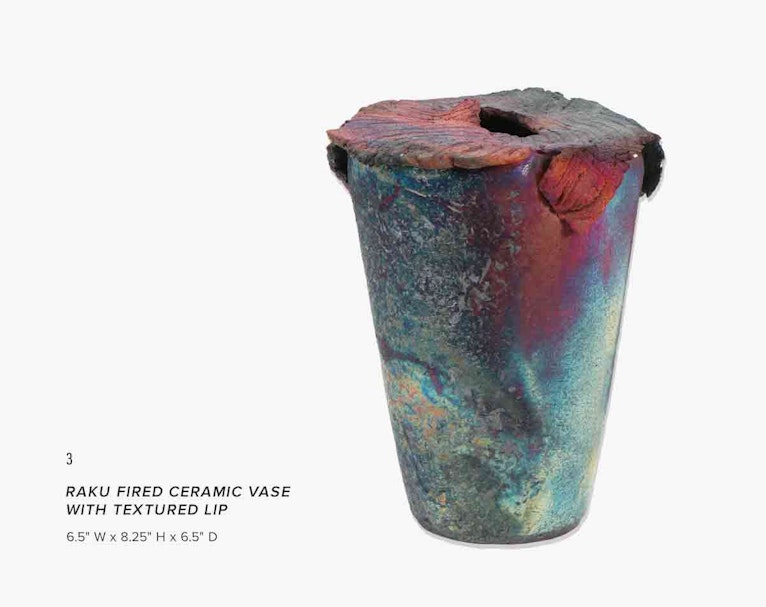
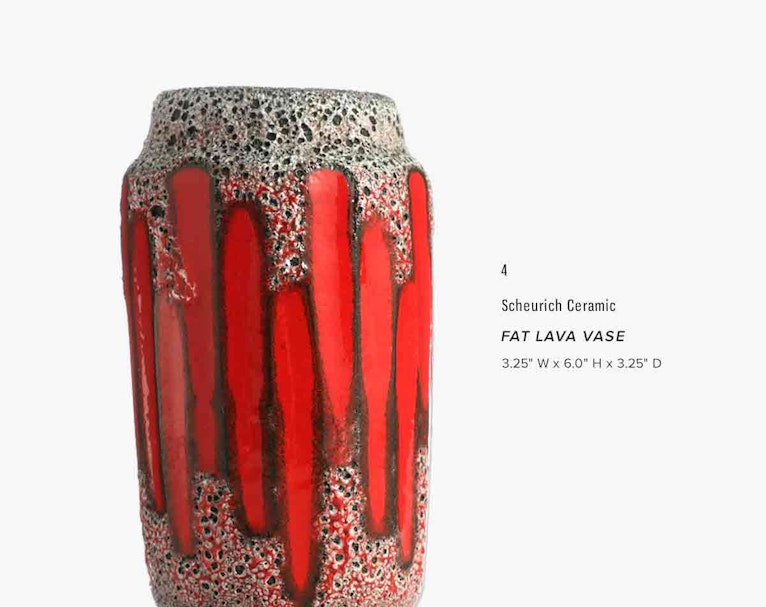
Texture
Detail can come from carving, imprinting, or painting. Textures created by carving and imprinting interact with the glaze in different ways that can make the glaze thinner or thicker in places. The amount of glaze affects the color and sometimes, dictates whether the finish is matte, glossy, or semi-matte.
Function
When evaluating pottery, you want to consider: What purpose does this serve? How might it fit into your hand? How often do you reach for it? Who is displaying it, and where, and why? There are some pieces that you would likely engage with more than others. Is the piece meant to be decorative, like a raku vase, or used regularly, like the Marblehead candleholder?
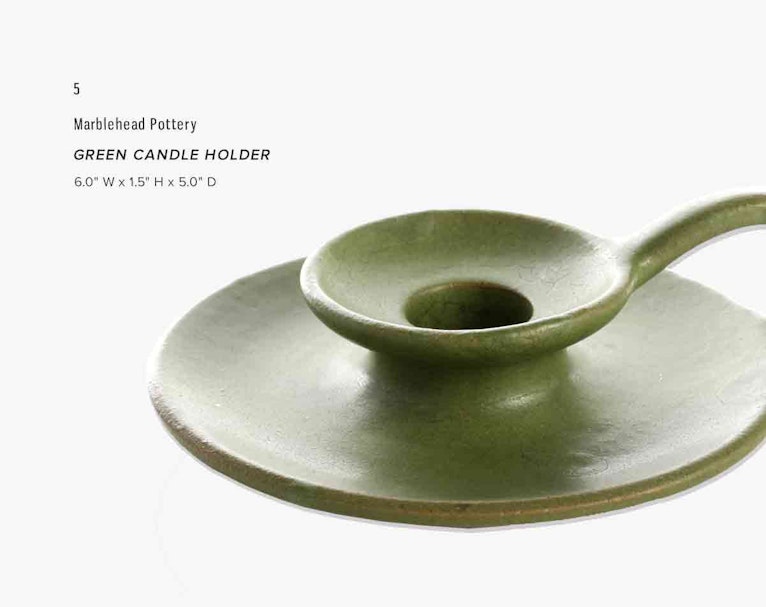
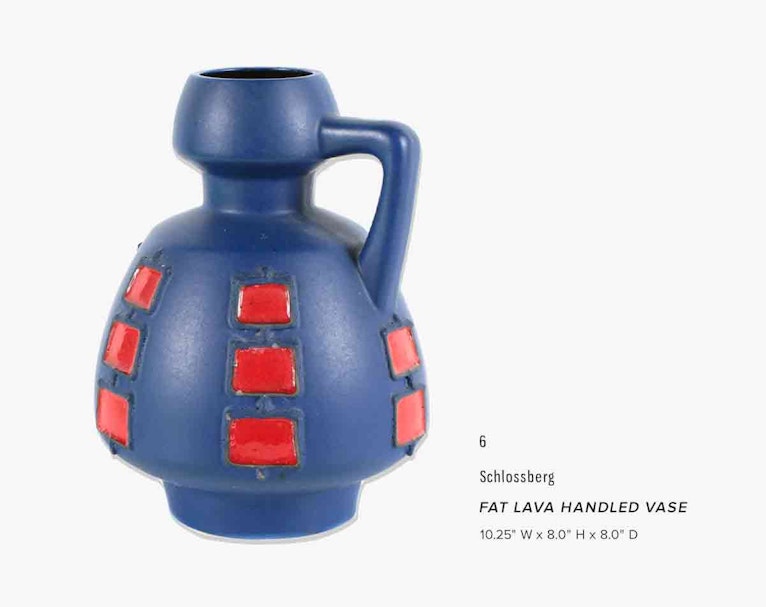
Handles and Feet
The foot of a pot can be a sort of pedestal – drastically changing the way that the form looks. In the case of the Fulper Art Pottery Bowl, the four little feet elevate the floor, making it appear like it’s floating. The same technique is employed on the vermillion art vase. Feet can add a level of elegance. Handles can help inform the function of a piece and whether it is decorative or functional.
History
When choosing pieces to add to her collection, Tisue says," In my own home, I like pieces with an interesting history, whether that history is knowing a friend made the piece or that it was created in California during the Mid Century Modern era. I also like when you can see the artist’s hand in a piece, which is why the Design West plate speaks to me. The beautiful thing about ceramics is that they last forever. Most of the things that we know about Ancient Greek society are from pottery relics. In the same way, I view the pieces on my table and in my cupboard as a mark of a specific time in my life, and the people I was with during that period.
